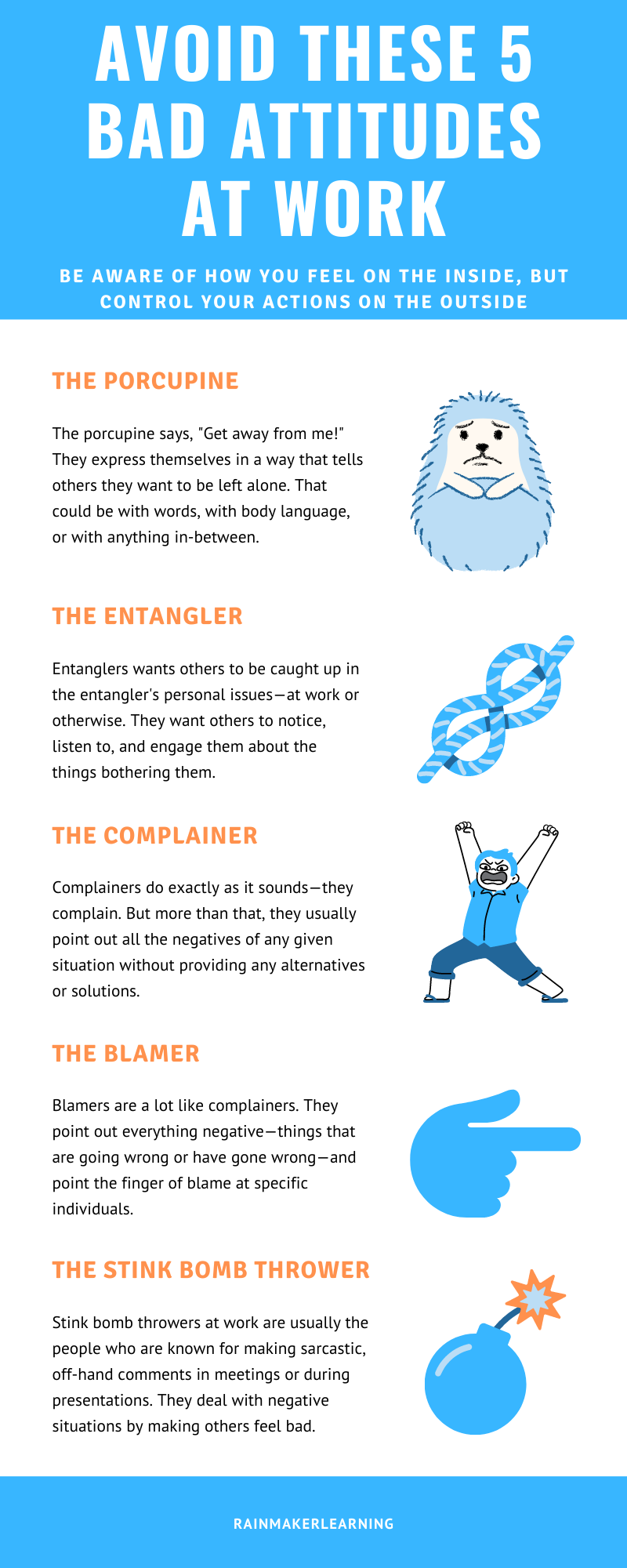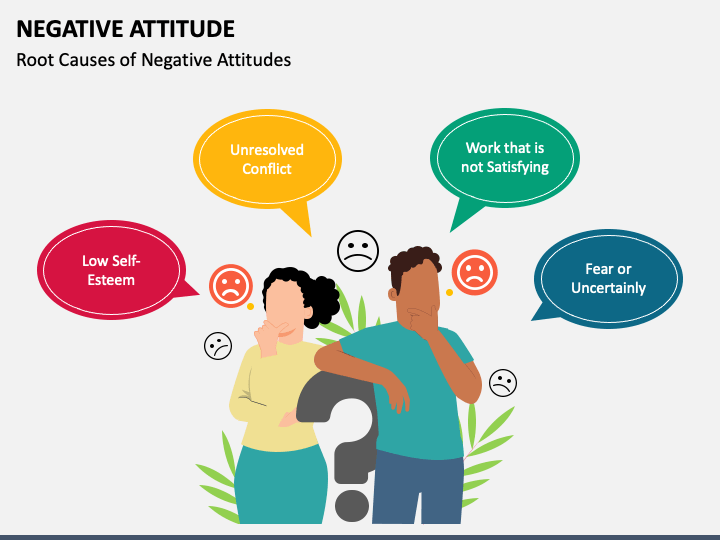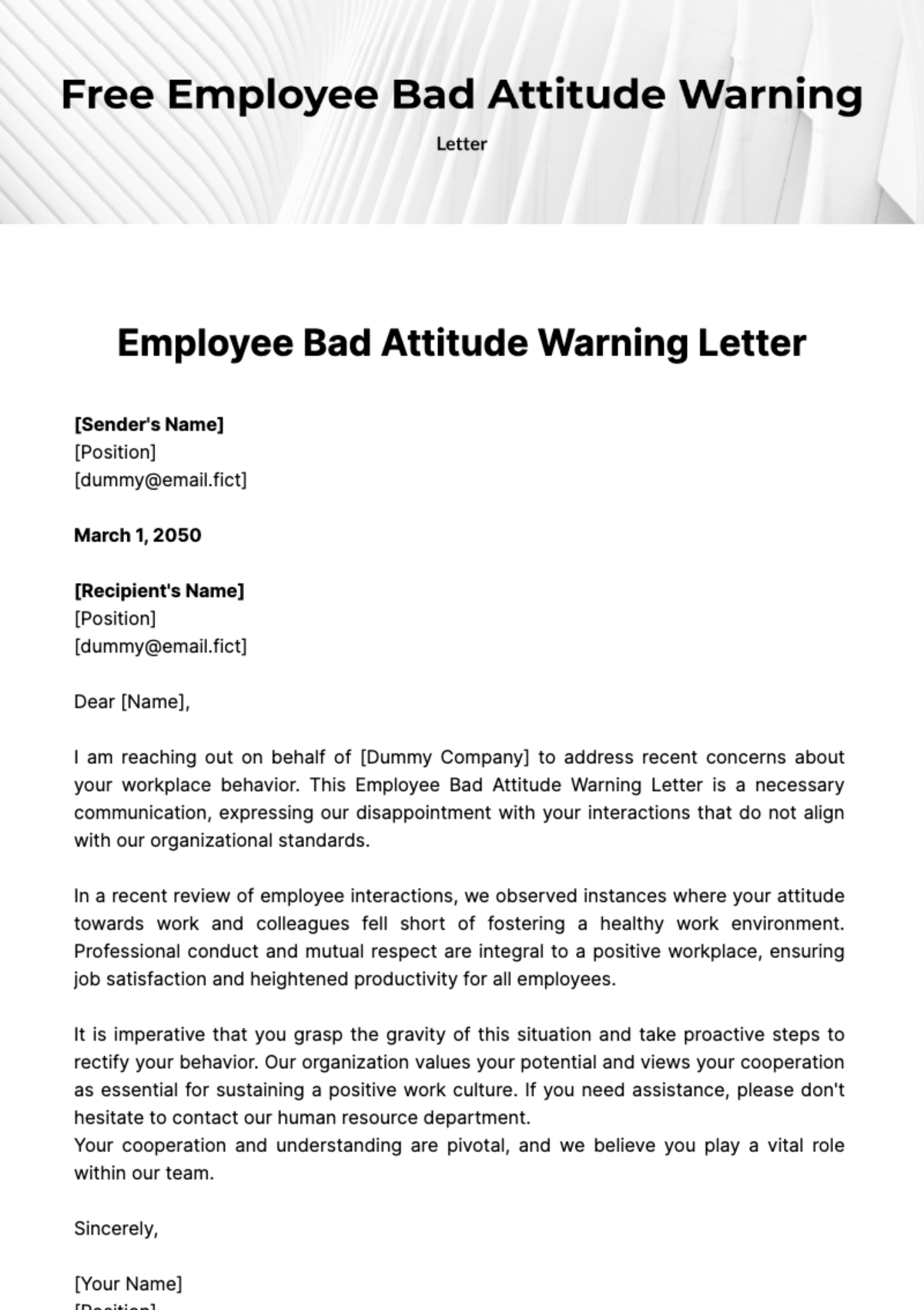How To Tell Someone They Have A Bad Attitude

The aroma of burnt coffee hung heavy in the air, a fitting metaphor for the tense meeting unfolding. Sarah, usually a beacon of positivity, tapped her pen against the table, her brow furrowed as she prepared for a difficult conversation. Across from her, Mark, a talented but increasingly cynical team member, slumped in his chair, radiating a palpable air of negativity that threatened to poison the collaborative atmosphere.
Delivering the news that someone's attitude is negatively impacting others requires a delicate blend of empathy, honesty, and actionable feedback. It's a conversation nobody enjoys, but one that's crucial for maintaining a healthy and productive work environment.
Understanding the Root Cause
Before diving into the conversation, it's important to understand the possible reasons behind the negative attitude. Is it a temporary response to a stressful project, or a deeper-seated issue? A recent study by Gallup found that employees who feel unheard are 2.7 times more likely to be actively disengaged, which can manifest as a negative attitude.
Often, negativity stems from feeling undervalued, overwhelmed, or lacking the resources needed to succeed. Taking the time to understand Mark's perspective could reveal underlying frustrations that can be addressed directly.
Choosing the Right Approach
The way you deliver the message is just as important as the message itself. Avoid accusatory language and focus on specific behaviors and their impact. Instead of saying "You're always negative," try something like "I've noticed that in recent meetings, you've expressed concerns about new initiatives. I’m curious to understand your perspective better."
Create a safe space for Mark to express himself without feeling judged. This allows him to feel heard and opens the door for a more constructive dialogue.
Focus on Specific Behaviors and Impact
General criticisms are often dismissed, but specific examples are harder to ignore. Instead of saying "Your attitude is bringing the team down," try something like "When you dismiss new ideas without offering constructive alternatives, it discourages other team members from sharing their thoughts."
Quantifying the impact of Mark's behavior can also be effective. For example, "I've noticed that project timelines have been consistently missed in recent weeks, and some team members have confided that they feel demotivated. Is there anything we can do to improve the workflow and moral within our team?"
Offer Solutions and Support
Addressing a negative attitude isn't just about pointing out flaws; it's about helping the individual improve. Offer resources and support, such as mentoring opportunities, training programs, or counseling services.
Perhaps Mark would benefit from conflict resolution training or a time management workshop. Providing tangible support demonstrates a genuine commitment to their growth and development.
Document and Follow Up
It's essential to document the conversation, the agreed-upon action steps, and a timeline for follow-up. This provides a record of the interaction and ensures accountability.
Schedule regular check-ins with Mark to monitor progress and provide ongoing support. Celebrating small victories can reinforce positive changes and boost morale.
"People will forget what you said, people will forget what you did, but people will never forget how you made them feel." - Maya Angelou
Dealing with a negative attitude requires patience, empathy, and a commitment to creating a positive work environment. By approaching the conversation with a focus on understanding, support, and constructive feedback, it's possible to help individuals like Mark transform their perspective and contribute more effectively to the team. The goal is not to silence dissent, but to channel it into productive dialogue and positive change.
As Sarah took a deep breath and began to speak, she understood the weight of her words. It was not about reprimanding Mark, but about helping him rediscover his passion and potential within the team.


















